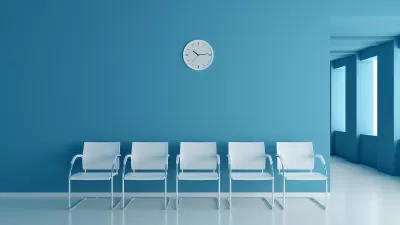Drug overdoses and suicides caused American life expectancy to drop in 2017 for the second consecutive year, according to the Centers for Disease Control and Prevention. Most notable is the gap between the urban and rural suicide rate.

"Public health and demographic experts reacted with alarm to the release of the Centers for Disease Control and Prevention’s annual statistics, which are considered a reliable barometer of a society’s health," reports Lenny Bernstein who covers health and medicine for The Washington Post.
The CDC issues its health statistics report each December. The 2017 report pdf] is the third in a row to show a decline [or stagnation] in life expectancy.
Overall, Americans could expect to live 78.6 years at birth in 2017, down a tenth of a year from the 2016 estimate, according to the CDC’s National Center for Health Statistics.
Among the 44 countries graphed by the Organisation for Economic Co-operation and Development (OECD), the U.S. had the 28th highest life expectancy in 2017. Switzerland and Japan were highest.
However, it's not end-of-life illnesses that are reducing American's life expectancy. Bernstein notes that "deaths from cancer continued their long, steady, downward trend, and deaths from heart disease, the No. 1 killer of Americans, which had been declining until 2011, continued to level off."
"Tragically, this troubling trend is largely driven by deaths from drug overdose and suicide," said Robert R. Redfield, M.D., CDC Director, in an official statement.
Drugs
Drug overdose deaths increased 9.6 percent in 2017 from 2016, with those attributed to synthetic opioids, such as fentanyl, increasing by 45 percent.
"The geographic disparity in overdose deaths continued in 2017," notes Bernstein. The 2017 national average was 21.7 per 100,000,
West Virginia again led the nation with 57.8 deaths per 100,000 people, followed by Ohio, Pennsylvania and the District of Columbia. Nebraska, by contrast, had just 8.1 drug overdose deaths per 100,000 residents.
Suicides
In a companion report, the government detailed the ongoing growth of deaths from suicide, which has climbed steadily since 1999 and grown worse since 2006.
Most notable is the widening gap between urban and rural Americans. Suicide rates in the most rural counties are now nearly double those in the most urban counties.
Age-adjusted suicide rates, by county urbanization level: United States, 1999 and 2017
Credit: CDC/National Center for Health Statistics
“Higher suicide rates in rural areas are due to nearly 60 percent of rural homes having a gun versus less than half of homes in urban areas,” wrote Keith Humphreys, a professor of psychiatry and behavioral sciences at Stanford University, in an email. “Having easily available lethal means is a big risk factor for suicide.”
"The CDC had not touched firearm research since 1996 — when the NRA accused the agency of promoting gun control and Congress threatened to strip the agency’s funding," wrote Todd C. Frankel for The Washington Post on Jan. 14, 2015.
A Popular Science article, "The decline in U.S. life expectancy is unlike anything we've seen in a century," identifies a third factor — chronic liver disease, as a reason for the reduced life expectancy.
Related in Planetizen:
- Life expectancy varies by 20-years depending on region, May 11, 2017
-
People in Rural Areas Are Dying Earlier Than People in Urban Areas, January 18, 2017: Access to healthcare and city or suburban lifestyles seem to be tied to a longer life.
- Study: Geography Matters for Life Expectancy of Low Income Residents, April 12, 2016
-
Middle-Aged White Americans Take a Significant Turn for the Worse, November 24, 2015: A study supported by the CDC points to three reasons for the life expectancy being lower for Americans than in other developed nations.
-
Rural Suicides Far Exceed Urban Suicides, September 28, 2009
FULL STORY: U.S. life expectancy declines again, a dismal trend not seen since World War I

Maui's Vacation Rental Debate Turns Ugly
Verbal attacks, misinformation campaigns and fistfights plague a high-stakes debate to convert thousands of vacation rentals into long-term housing.

Planetizen Federal Action Tracker
A weekly monitor of how Trump’s orders and actions are impacting planners and planning in America.

Chicago’s Ghost Rails
Just beneath the surface of the modern city lie the remnants of its expansive early 20th-century streetcar system.

Bend, Oregon Zoning Reforms Prioritize Small-Scale Housing
The city altered its zoning code to allow multi-family housing and eliminated parking mandates citywide.

Amtrak Cutting Jobs, Funding to High-Speed Rail
The agency plans to cut 10 percent of its workforce and has confirmed it will not fund new high-speed rail projects.

LA Denies Basic Services to Unhoused Residents
The city has repeatedly failed to respond to requests for trash pickup at encampment sites, and eliminated a program that provided mobile showers and toilets.
Urban Design for Planners 1: Software Tools
This six-course series explores essential urban design concepts using open source software and equips planners with the tools they need to participate fully in the urban design process.
Planning for Universal Design
Learn the tools for implementing Universal Design in planning regulations.
planning NEXT
Appalachian Highlands Housing Partners
Mpact (founded as Rail~Volution)
City of Camden Redevelopment Agency
City of Astoria
City of Portland
City of Laramie






























